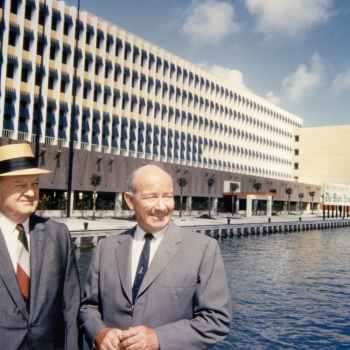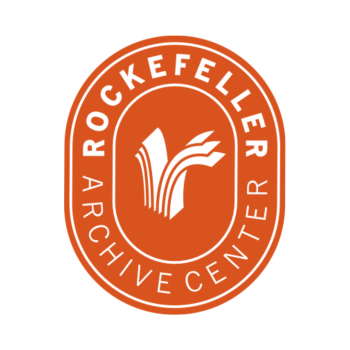
History
75 Years of Knight Foundation
Since its founding in December 1950, the John S. and James L. Knight Foundation has been dedicated to supporting journalism––the business in which the Knight brothers built their fortune––and strong communities, which the Knight newspapers always worked to serve.
The seeds for Knight Foundation were planted by Charles Landon Knight, Jack and Jim Knight’s father, who was editor and publisher of the Akron Beacon Journal in the early part of the 20th century and a firm believer in the value of education. A civic leader in northeast Ohio, he often helped financially strapped students pay for college. After his death in 1933, his sons established the Knight Memorial Education Fund to provide financial aid to local students. In 1950, that fund’s $9,047 in assets were transferred to the newly created Knight Foundation.
In its early days, Knight Foundation was funded by contributions from Knight newspapers. It made small grants to local educational, cultural and social service institutions in the cities from which the funding came, as well as to journalism-related causes. Its resources grew significantly in 1965 through a bequest of Knight Newspapers stock from Clara I. Knight, Charles Knight’s widow and the brothers’ mother. With this infusion, the foundation’s ambitions expanded. In 1966, the foundation’s trustees voted to end assistance for individual students and instead make grants to colleges and universities. Over the next few years, cultural and educational institutions in Akron, Miami, Charlotte, N.C. and Detroit—all Knight cities—began to receive grants from the foundation.
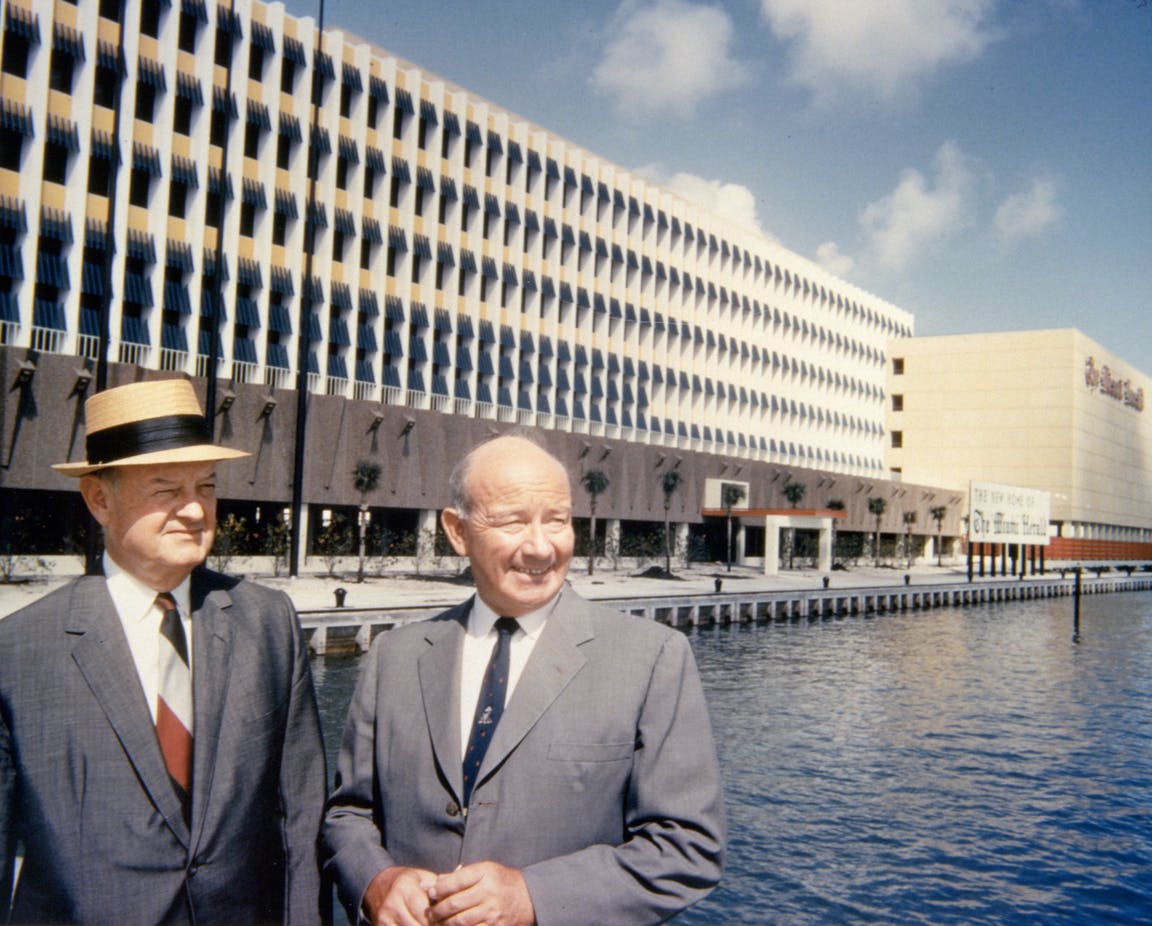
Growing Resources, Expanded Reach
The early 1970s were another moment of expansion. In 1972, the trustees authorized the sale of Clara Knight’s stock, raising more than $21 million. Then, in 1974, Knight Newspapers merged with Ridder Publications to create Knight-Ridder Inc., then the largest newspaper company in the country. Jack Knight, the combined company’s largest shareholder, was persuaded by Lee Hills, its chairman and CEO, to leave the bulk of his estate to the foundation in order to secure its independence. A year later, with its ambitious future assured, Knight Foundation opened its first office and began hiring full-time staff.
The foundation quickly began building infrastructure to support larger, more focused investments. Its support for journalism education broadened, and it began making more substantial grants to cultural institutions and civic projects in its network of Knight cities. In 1981, after Jack Knight’s death, his bequest of more than $428 million made the Knight Foundation one of the nation’s largest private philanthropies. A new strategic planning process reinforced its commitments, formalized its work in local communities and sharpened its journalism focus with deeper investments in education and press freedom.
A key pillar of that strategy was the creation and development of premier midcareer journalism fellowships at universities including Stanford, Harvard, Yale, Columbia, MIT, the University of Michigan and the University of Maryland. These fellowships helped establish Knight’s national presence. Beginning in the late 1980s, the foundation launched major national initiatives such as the Knight Commission on Intercollegiate Athletics, the Knight Chairs in Journalism and the National Community Development Initiative (now Living Cities), a landmark philanthropic collaboration focused on urban revitalization.
In 1991, Jim Knight died, leaving his $200 million that further expanded the foundation’s resources and reach. These funds were directed toward seven areas identified as priorities: arts and culture, children and social welfare, citizenship, community development, education, homelessness and literacy.
Knight Cities and National Footprint
Knight also worked to strengthen the civic infrastructure of its communities. Through the Community Foundations Initiative, the foundation has provided more than $130 million to build or expand donor-advised funds in cities and towns across its network—creating local capacity to respond quickly to both opportunity and crisis. In 1998, trustees decided that the Community Initiatives Program would be limited to the 26 cities that were part of the program at the time of Jim Knight’s death. These 26 Knight cities have remained a focus of the foundation ever since.
In 1993, the board of trustees voted to rename the organization the John S. and James L. Knight Foundation, honoring its founders. By the turn of the millennium, the foundation entered a new strategic phase. In 2000, it adopted a five-year strategic plan that reframed its community work around long-term partnerships, deep local engagement and the pursuit of high-impact ideas. The resulting Community Partners Program empowered local program directors and advisory committees in each Knight city to identify and support transformative initiatives, while a new National Ventures Fund allowed successful models to scale.
Under the leadership of president Alberto Ibargüen, who took the helm in 2005, Knight began rethinking what it means to build informed and engaged communities in the digital age. Grantmaking became more experimental, with trustees launching the New and National Initiatives program and a Transformation Fund to support ambitious, early-stage ideas. In 2006, the foundation introduced the Knight News Challenge, an open call for digital solutions to improve how communities access and share news. Its success led to similar “challenge” models in the arts and civic life, including the Knight Arts Challenge and the Knight Community Information Challenge.
During this period, Knight was also wrestling with the nature of community and the conditions under which people feel emotionally connected to their neighborhoods. Knight partnered with Gallup to launch the Soul of the Community study, which identified a significant correlation between residents’ emotional connection to place and local economic growth. In response, Knight expanded its grantmaking in the arts and civic engagement, emphasizing opportunities that contributed to a sense of belonging among residents.
Knight also recognized that the digital transformation of news and civic life required new perspectives on access, equity and participation. It convened the Knight Commission on the Information Needs of Communities in a Democracy, whose work helped shape the FCC’s National Broadband Plan. The foundation also announced numerous initiatives to improve digital access and literacy, especially for low-income Americans.
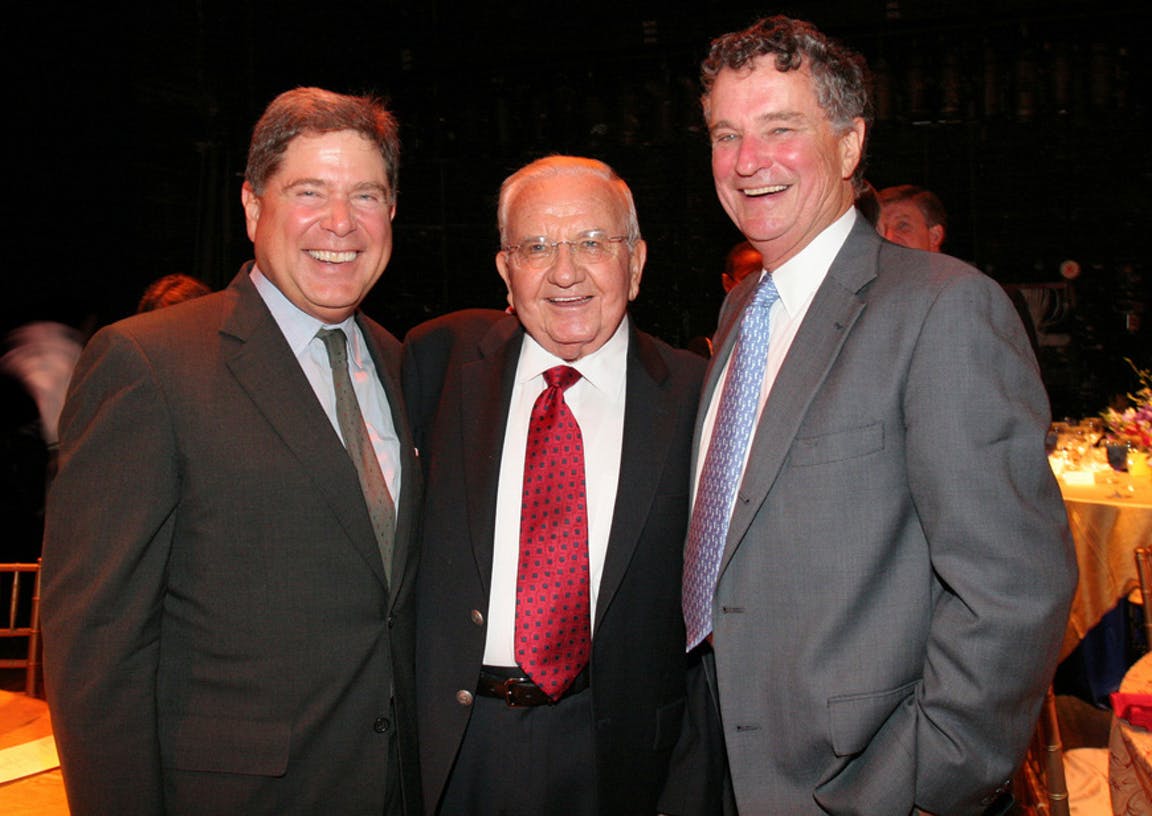
News, Information and Digital Citizenship
In 2012, Knight Foundation began to rethink the meaning of citizenship in a digital world. To help information ecosystems prepare for a digital future, Knight made its first major investment in digital journalism with the Knight Digital Media Center at the University of Southern California and the University of California, Berkeley.
This commitment to innovation was reflected in the OpenNews program, launched in 2011 as a partnership between Knight and the Mozilla Foundation. OpenNews connected developers with newsrooms to create open-source tools for digital journalism.
Knight also reimagined public institutions, especially libraries, for the digital age. It helped launch the Digital Public Library of America, a new model that expanded public access to cultural and historical materials from archives, libraries and museums nationwide.
This commitment to civic infrastructure and open access extended to digital tools as well. Knight invested in programs like the Tech for Engagement Initiative that strengthened democratic participation and government transparency. Recognizing that digital freedom requires digital security, the foundation also began funding encryption and secure communication projects, including TextSecure, the precursor to Signal.
Between 2019 and 2025, Knight made more than $124 million in grants to support independent scholarship and policy research on information and technology in the context of democracy, including notable research partnerships with Gallup and Langer Research.
These investments at the intersection of technology, transparency and civic empowerment culminated in the creation of the Knight First Amendment Institute at Columbia University. The institute, launched in 2016 with a $60 million endowment, is now one of the premier organizations working on government surveillance, platform governance and the boundaries of online speech.
Civic Renewal and The ‘Grand Bargain’
While Knight Foundation invested in civic infrastructure, it also remained attentive to the needs of its communities. The foundation started the Knight Cities Challenge and Knight Emerging City Champions, initiatives supporting projects that reimagine the civic commons and promote civic engagement. From 2005 to 2025, the foundation invested $485 million in the arts across Knight communities and nationally, supporting individual artists and organizations through direct grants and through open calls like Knight New Work, the Knight Arts Challenge, Knight Arts Champions and the Knight Art + Tech Expansion Fund.
One major milestone came in 2013, when Knight played a pivotal role in Detroit’s Grand Bargain, a philanthropic agreement that protected the city’s pensions and the Detroit Institute of Arts during the city’s bankruptcy. The Grand Bargain was a watershed moment for Detroit, as the city’s cultural identity was preserved as a driver of economic and civic renewal.
Knight Foundation’s grantmaking in this period was experimental, taking risks by testing new ideas that critically engaged communities. To better understand the impact of this strategy, the foundation expanded its Learning & Impact program to conduct field-wide research and evaluations. In 2025, the program was renamed Information and Society, and it has been responsible for research projects like the Free Expression Research Series and the Knight Diversity of Asset Managers Research Series.
Trust, Media and Democracy
As Knight Foundation responded to the local needs of cities, it also looked to the broader forces eroding public trust in media. In 2017, the foundation partnered with the Aspen Institute to convene the Knight Commission on Trust, Media and Democracy. The Commission’s 2019 report, Crisis in Democracy: Renewing Trust in America, called for radical transparency in the media and tech industries, as well as the development of sustainable business models for journalism.
This crisis was real. From 2005 to 2023, more than 2,900 newsrooms closed, leaving many communities in news deserts, areas with little to no access to local reporting. Knight responded by evolving its journalism strategy, increasing investments in the core infrastructure that supports local news ecosystems. Knight’s journalism program targeted four areas critical to long-term sustainability: revenue development; newsroom leadership; technology and product innovation; and freedom of the press.
In 2019, Knight committed $300 million to support local journalism, one of the most significant investments of its kind. This effort focused on rebuilding trust, fostering sustainability at the local level and supporting new business models, funding programs to lower operational costs and strengthen infrastructure. Then, in 2023, Knight partnered with the MacArthur Foundation and a coalition of 20 other funders to launch Press Forward, a $500 million initiative to enhance the growth and sustainability of local journalism.
Knight also invested in news literacy initiatives and expanded support for research on media and democracy in an age of misinformation. In 2019, it launched the Knight Research Network, which grew into a $94 million effort spanning more than 60 academic and civil society organizations. By 2024, it had produced over 900 peer-reviewed publications and has been a powerful voice in both public discourse and national policy.
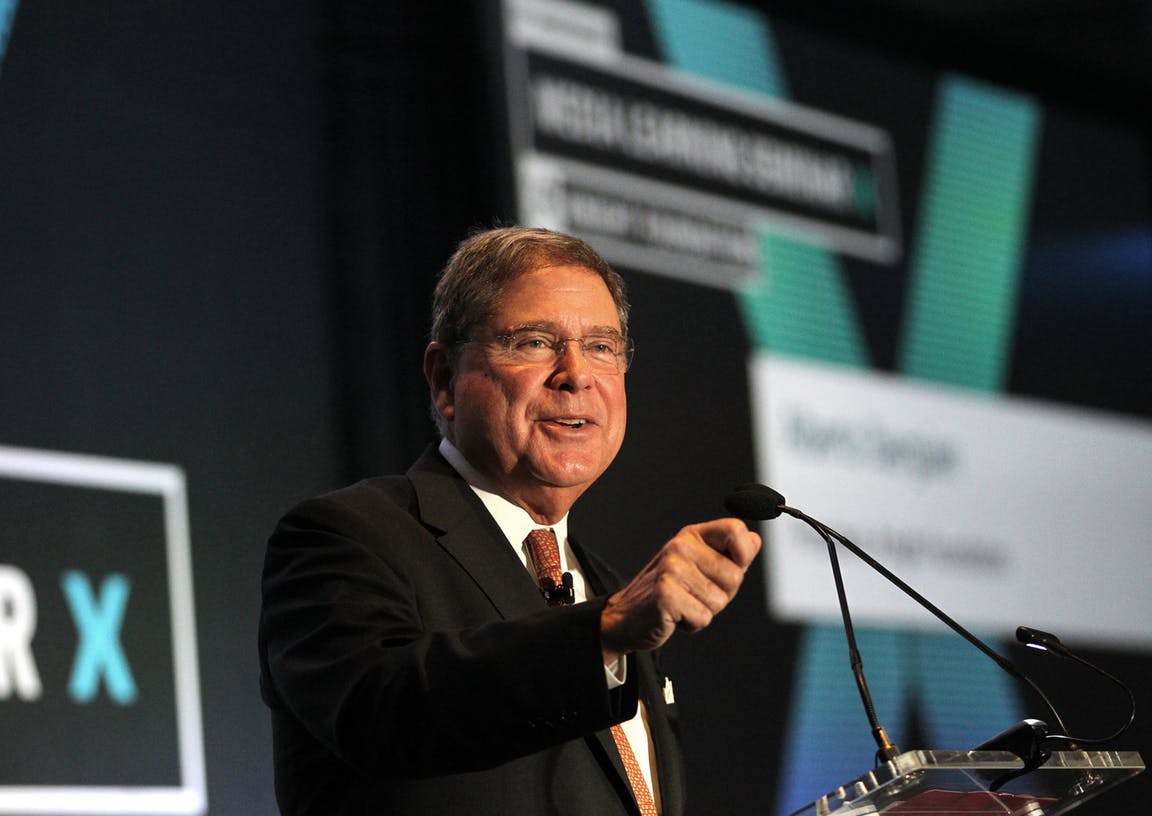
Philanthropy at the Speed of News
In 2023, Maribel Pérez Wadsworth, former president of Gannett Media and publisher of USA Today, became Knight’s seventh––and first female––president. Wadsworth brought a new sense of urgency to Knight’s work, calling for philanthropy to “move at the speed of news,” urging faster, more responsive grantmaking.
Knight quickly backed this vision, soon launching the Knight Election Hub, the Knight Growth Challenge, and the Pew-Knight Initiative, expanding research into how Americans access information and form civic identities.
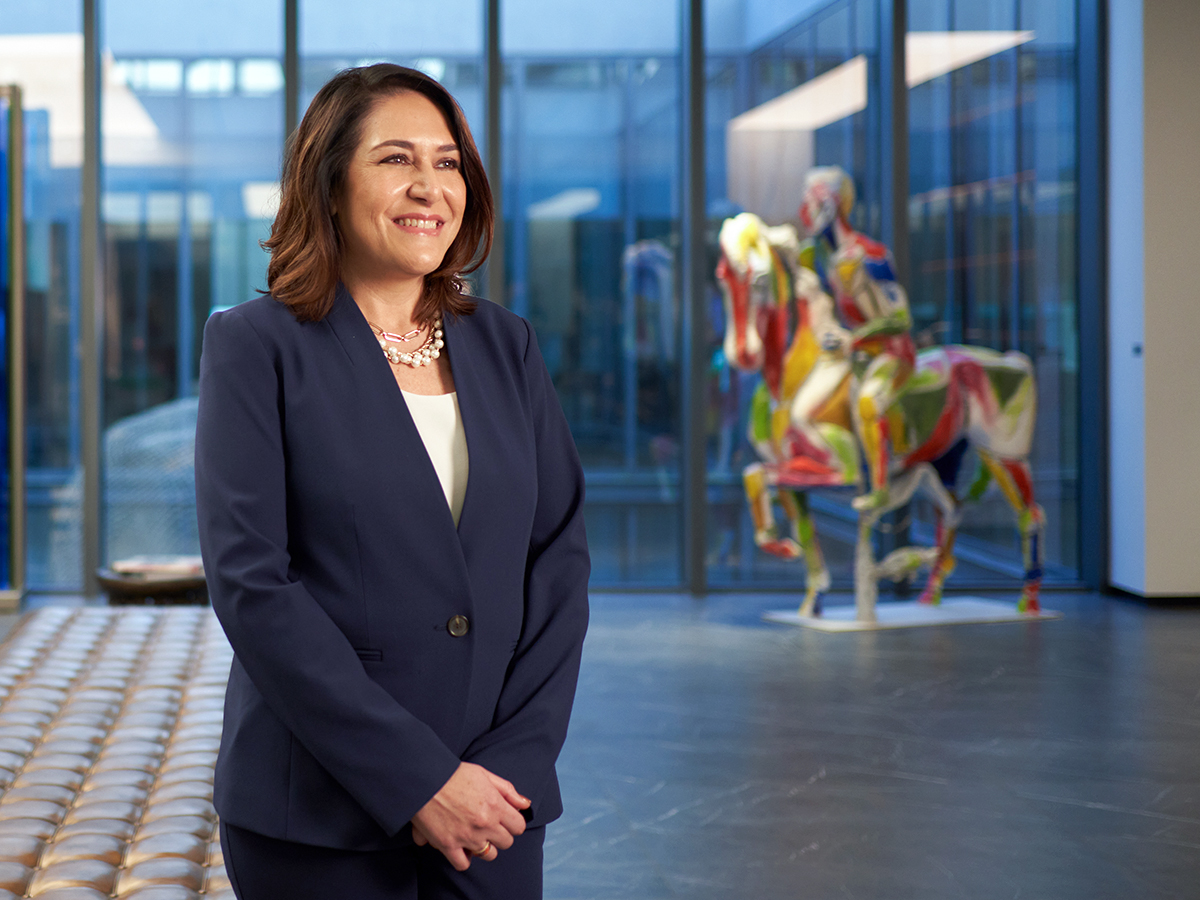
Wadsworth also emphasized responsiveness to urgent local needs. In 2024, Knight provided $2.2 million in emergency support to 96 Florida arts organizations after abrupt state funding cuts and made emergency grants to North Carolina newsrooms affected by Hurricane Helene. In 2025, Wadsworth called on philanthropic leaders to join her in providing emergency funds to support public media stations at risk of closure after the rescission of federal funding for the Corporation for Public Broadcasting. Her efforts led to the formation of a coalition of six foundations who announced a combined commitment of $36.5 million in emergency funding to protect public media in vulnerable communities.
Wadsworth also called for a renewed focus on local communities, telling participants at the 2025 Knight Media Forum: “The power to change is not lost—it’s local.” Her words have become a call to action, a reflection of Knight Foundation’s belief in the power of motivated individuals, grounded in local needs, to drive lasting change.
Today, Wadsworth leads a $2.5 billion foundation with staff across 8 communities, awarding over $200 million in grants each year. Knight Foundation advances its longstanding mission—guided by the Knight brothers’ fundamental belief that engaged, well-informed communities are key to a healthy democracy—through four program areas: Journalism, Community Impact, Arts, and Information and Society. Knight’s strength has always been its dual identity: a national foundation with deep local roots. Today, it empowers the people who make change in those communities to catalyze their success—and scale their best ideas nationwide.
John S. and James L. Knight Foundation History
Prepared by Virginia L. Henke, August 6, 1998.
